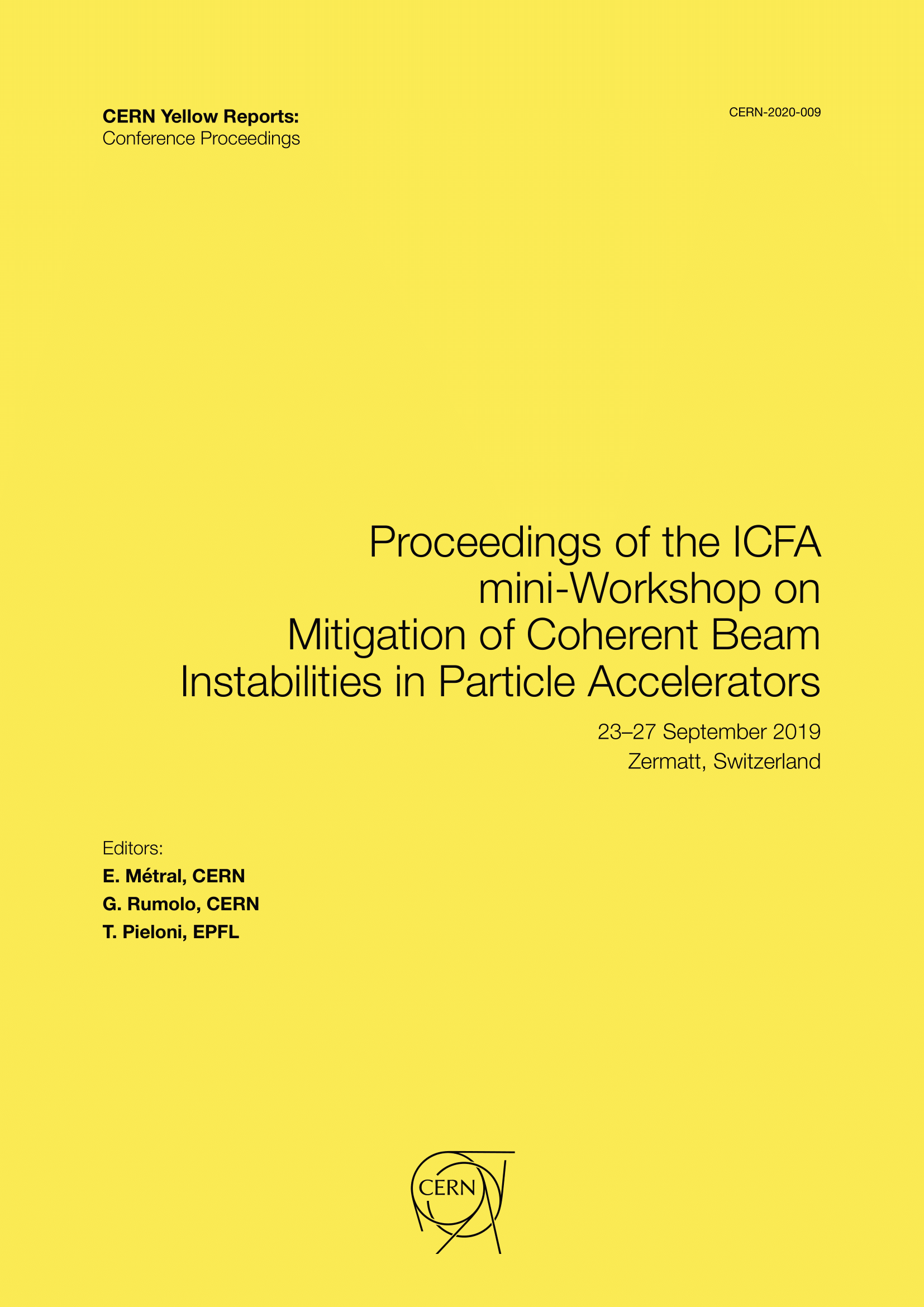Space charge effects for transverse collective instabilities in circular machines
DOI:
https://doi.org/10.23732/CYRCP-2020-009.9Abstract
Fifty years ago, the first significant publication was presented on transverse collective instabilities of spacecharge-dominated beams in circular machines; it was a CERN preprint of G. Merle and D. Möhl “The stabilizing influence of nonlinear space charge on transverse coherent oscillations”. A relatively simple equation of motion was suggested there as something obvious. Although it was, strictly speaking, neither obvious nor even quite correct, as further studies have shown, it played and continues to play an extraordinarily important role. Thus, this anniversary adds a special flavor to the request of the workshop organizers to review the main results in this area of beam dynamics.
Purporting to fulfill that, this paper is divided in two sections, on coasting and bunched beams respectfully. We rather rarely deal with coasting beams in circular machines, but still they deserve a special attention not only for themselves, but also as relatively simple configurations to start from and get some key ideas. This set of ideas includes a concept of rigid slices and strong space charge as its justification. Also, it includes inter-play of Landau damping (LD), space charge (SC) and octupoles, showing the importance of their polarity, in particular. These ideas, common for coasting and bunched beams, are presented in Sec. II and used in Sec. III. In the latter section, SC-modification of the transverse mode coupling instability (TMCI) is discussed, including paradoxes which were resolved in a discovery of convective instabilities.
The goal of this paper is to present, in a compact way, the main results in the area of beam dynamics, specified by the subject, where both SC and wake field are important. To a certain degree, such a task cannot be free from some subjectivity and arbitrariness, and I beg pardon of those colleagues who will find some valuable results underrepresented or not presented at all.
Downloads
Published
Issue
Section
License
Copyright (c) 2021 CERN

This work is licensed under a Creative Commons Attribution 4.0 International License.
Authors who publish with this publication agree to the following terms:
- CERN retains copyright and publishes the work licensed under the Creative Commons Attribution License 4.0 that allows others to share the work with an acknowledgement of the work's authorship and initial publication in this series.
- Authors are able to enter into separate, additional contractual arrangements for distribution of the published version of the work (e.g., post it to an institutional repository or publish it in a book), with an acknowledgement of its initial publication in this series.
- Authors are permitted and encouraged to post their work online (e.g., in institutional repositories or on their website) prior to and during the submission process, as it can lead to productive exchanges, as well as earlier and greater citation of published work (See The Effect of Open Access).

